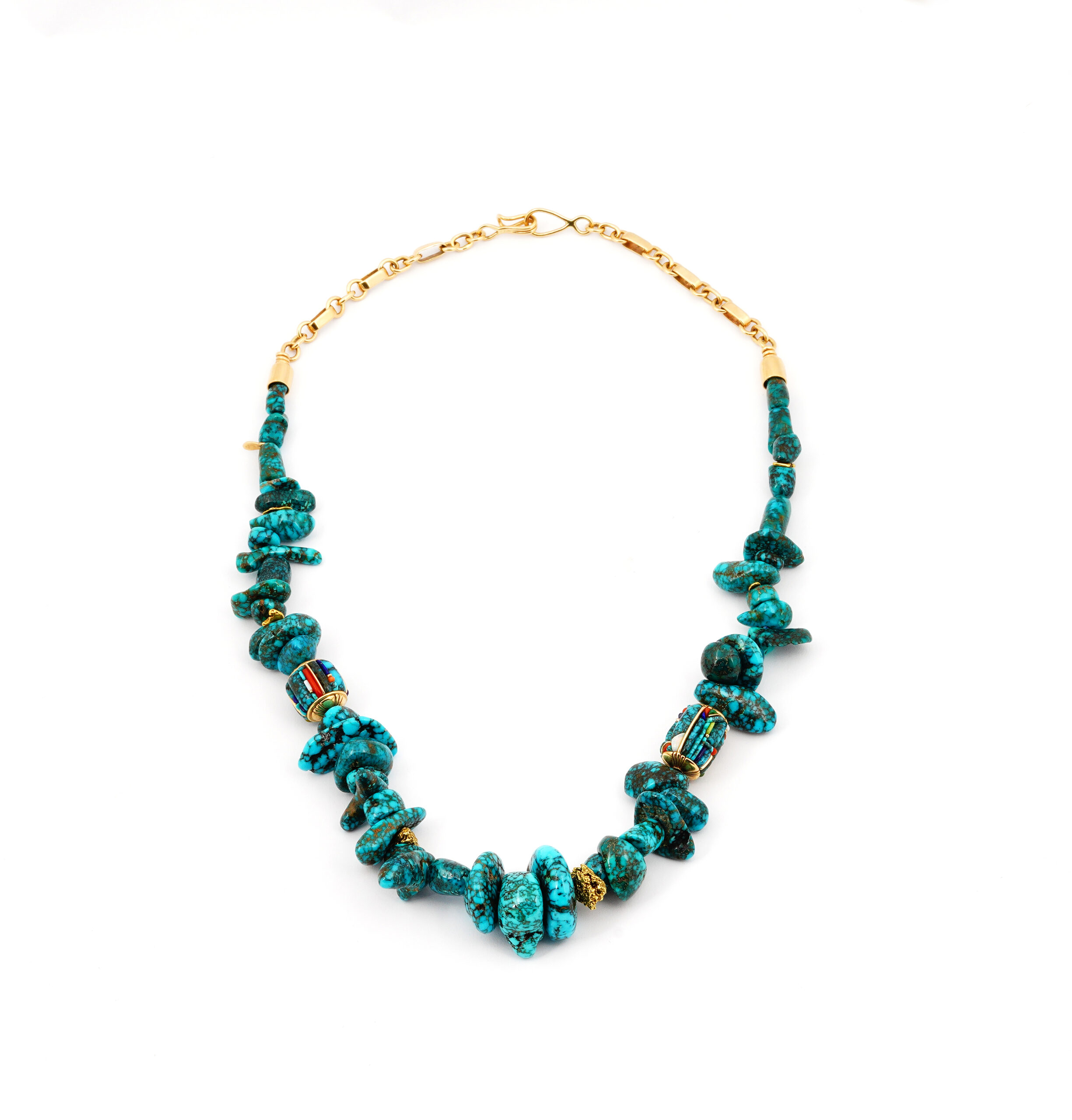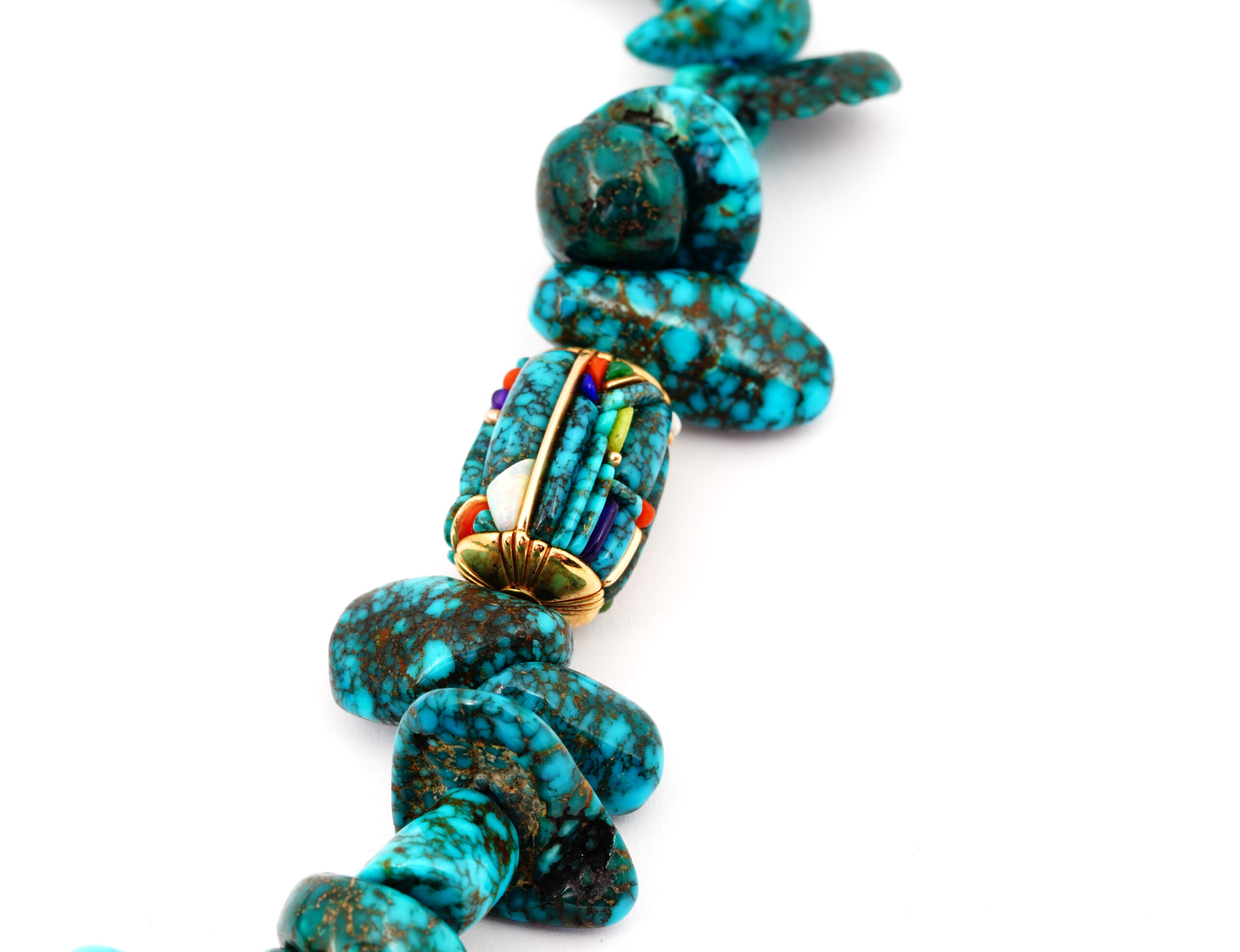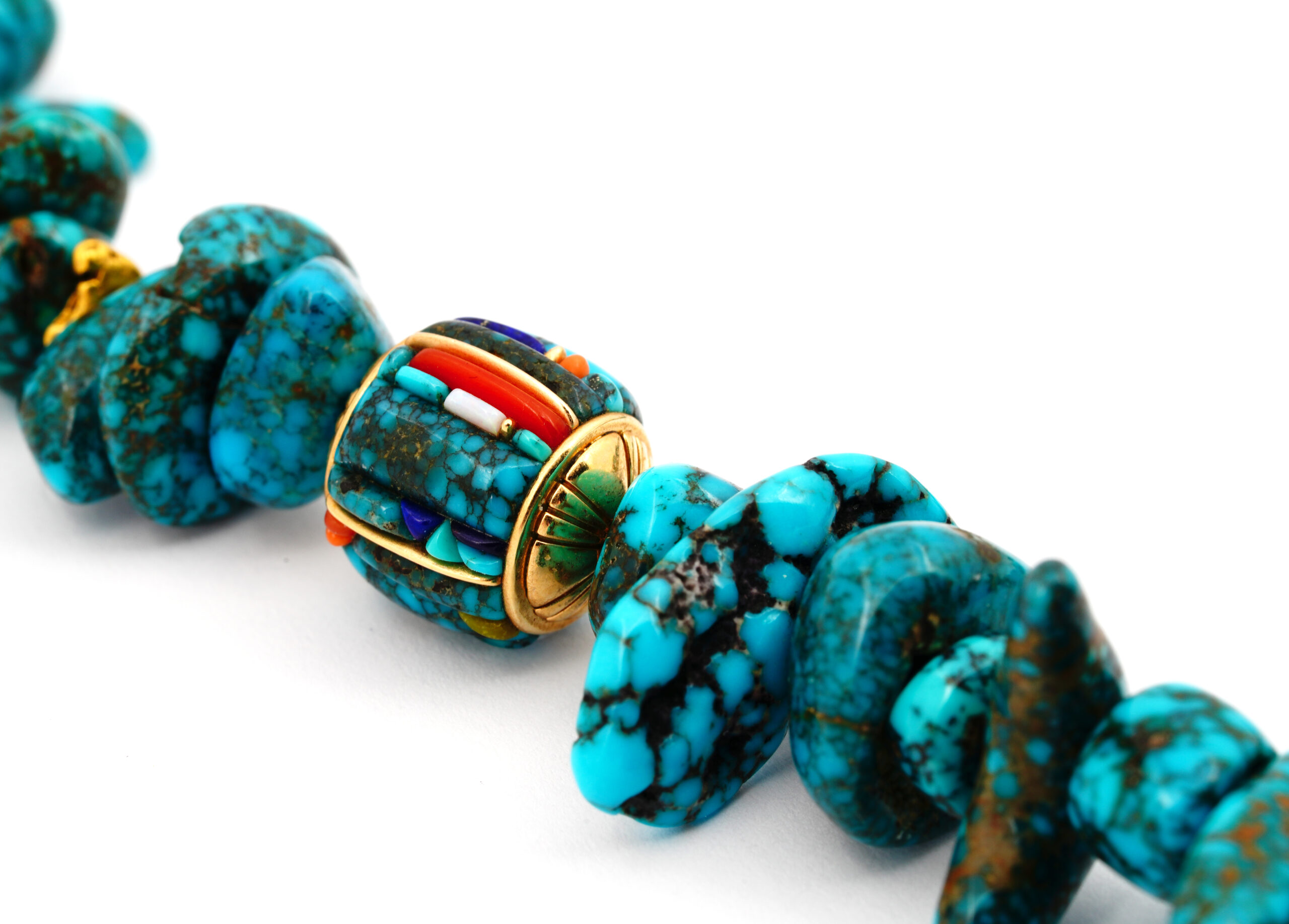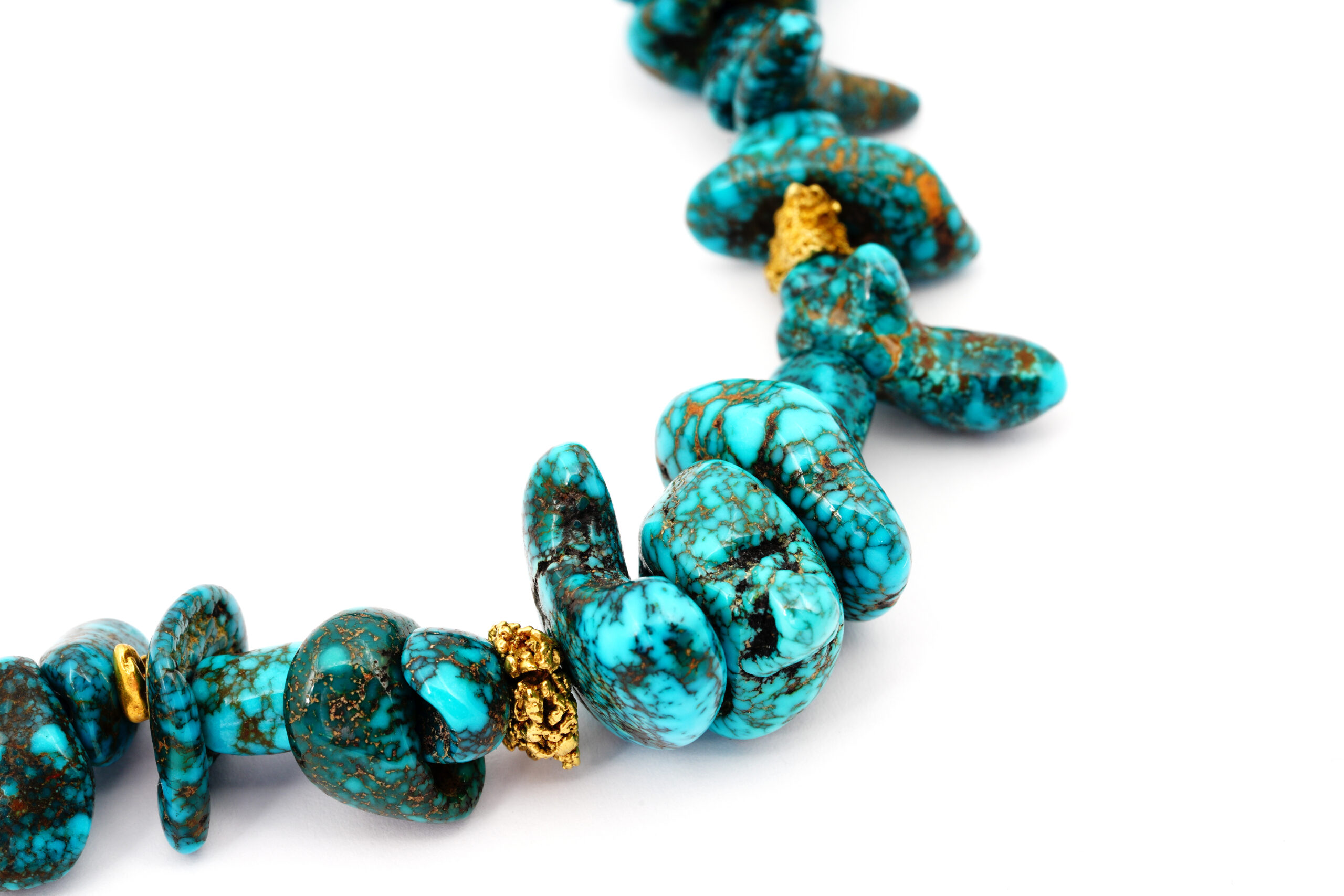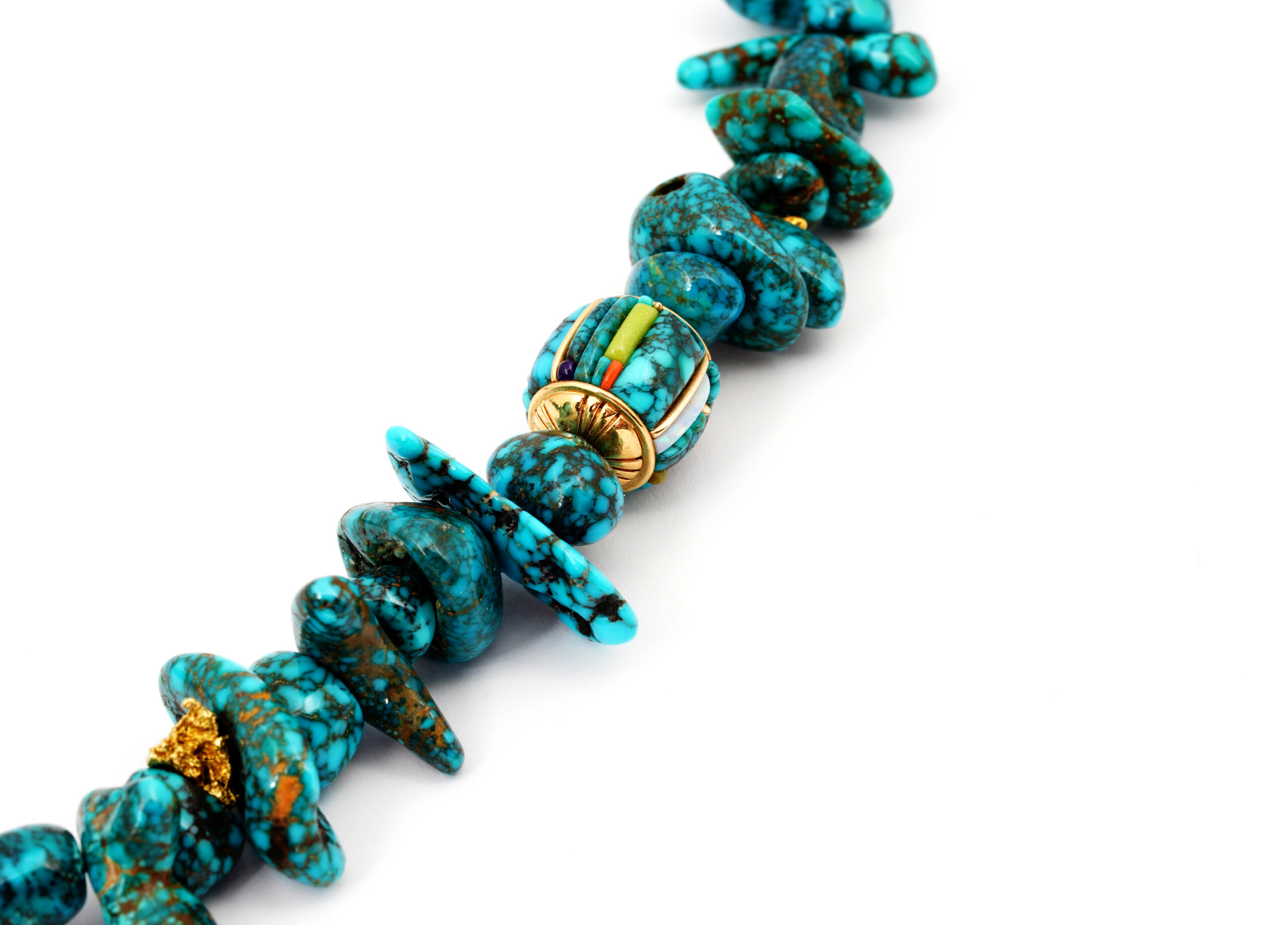Raymond Yazzie
Master Navajo Jeweler
Fossilized Lone Mountain Turquoise Necklace
About the Artist
Raymond Yazzie (Navajo, b. 1959) is widely regarded as one of the most accomplished contemporary Native American jewelers. Renowned for his extraordinary precision, innovative inlay work, and architectural sense of design, Yazzie creates pieces that are technically complex and visually powerful. His work seamlessly combines precious materials, traditional motifs, and contemporary artistry, pushing the boundaries of Southwestern jewelry.
Trained within a family of esteemed artists, Raymond developed a meticulous approach that reflects both personal vision and cultural grounding. His work is part of major museum collections, including the Smithsonian Institution, and is highly sought after by collectors for its refinement, balance, and bold design.

